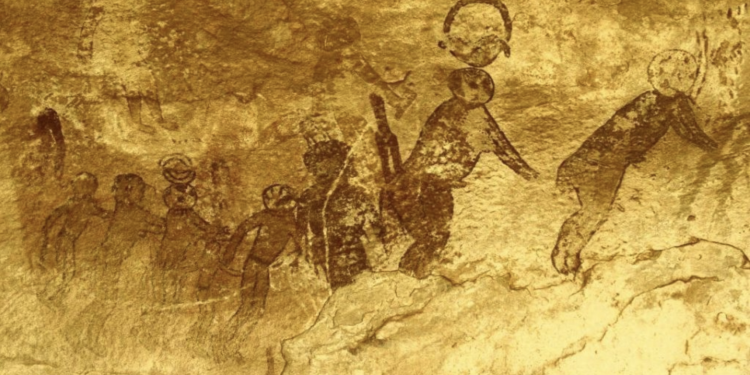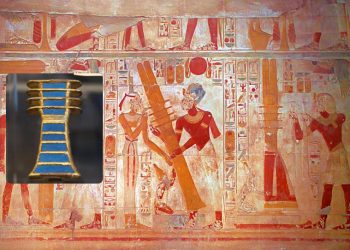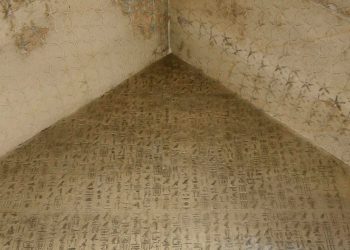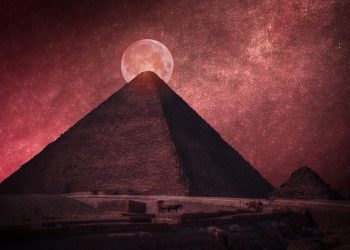Tucked away in the sprawling landscapes of the Sahara, the Tassili n’Ajjer plateau in southeastern Algeria is home to one of the world’s most mysterious art collections. This UNESCO World Heritage site is not just a rock formation but a massive open-air art gallery, boasting more than 15,000 cave paintings and engravings that span over an area of more than 70,000 km².
The artistic marvels found here aren’t your average weekend doodles. These extraordinary pieces of history date back as far as 12,000 years, offering a visual narration that stretches across millennia. From the Paleolithic era to the emergence of Berber-speaking people, this site provides an illustrative chronology unlike any other.
But it’s not just the age that’s intriguing. The unique preservation of this art, coupled with its sheer diversity, makes the Tassili n’Ajjer a historical goldmine. Whether it’s abstract symbols from the earliest periods or intricate animal and human depictions from later times, the range of art here is like a Spotify playlist that covers all genres.
This place is a dream for historians, archaeologists, art enthusiasts, and even conspiracy theorists (thanks to some otherworldly images). As you wander through these ancient galleries, you’re not just looking at pictures on a wall; you’re stepping into a time machine, embracing cultures, traditions, beliefs, and a subtle hint of humor from ages long past.
The Stars of the Show Tassili n’Ajjer: Unusual Characters
These paintings include an array of human figures, animals, and strange, alien-like beings that look like they could headline a science fiction film. It’s the Sahara’s answer to Hollywood’s Walk of Fame. From dancing women to cattle grazing, these paintings depict a society rich in cultural expressions and daily life nuances.
The evolution of the art can be seen in various stages. From abstract symbols and handprints in the oldest period to more detailed and sophisticated images in later eras, it’s like walking through an art history class. You can almost hear the ancient artists saying, “We started with stick figures, but we’ve gone pro now!”
Despite the harsh desert environment, these ancient drawings of Tassili n’Ajjer have remarkably survived thousands of years. Some even describe them as the “toughest art on the block,” able to withstand the sands of time (literally).
The Human Connection: Daily Lives and Rituals
Unlike our contemporary world, where capturing every moment is a click away, these ancient paintings were a way to document and celebrate life.
Scenes of dancing and performances of Tassili n’Ajjer indicate a love for celebration and ritual. It’s the historical proof that parties didn’t start with disco balls. They knew how to have a good time!
Agriculture, animal domestication, and farming practices are prominently depicted. These aren’t just static images but stories of survival, progress, and innovation. Imagine an ancient farmer, leaning on his hoe, saying, “Farming? Been there, done that. Where’s my tractor?”
The Otherworldly Connection: Aliens or Shamanic Visions?
The most talked-about paintings of Tassili n’Ajjer are those depicting figures that resemble aliens. These have sparked debates and even theories about ancient alien visitations.
Were the artists influenced by shamanic visions or were they simply ahead of their time in abstract art? Some argue it was the early version of sci-fi fandom. Others believe these paintings had spiritual or ceremonial significance.
The uncertainty surrounding some Tassili n’Ajjer paintings is like a cliffhanger in a novel. Was it a vision? A hallucination? A prehistoric prank? The debate continues.
The Enduring Appeal of Tassili n’Ajjer’s Cave Paintings
The cave paintings of Tassili n’Ajjer are a fascinating mix of history, art, mystery, and a dash of humor. It’s a complex and vivid portrayal of ancient life that challenges our understanding of human history.
From alien-like beings to ancient farmers who could have out-farmed modern agriculturalists, Tassili n’Ajjer offers a unique and humorous insight. If these walls could talk, they would surely be cracking jokes.
These paintings continue to attract scholars and tourists, a testament to their enduring appeal. They remind us that history can be engaging, intriguing, and even amusing. So the next time you find history boring, remember Tassili n’Ajjer. It might just change your mind.
PLEASE READ: Have something to add? Visit Curiosmos on Facebook. Join the discussion in our mobile Telegram group. Also, follow us on Google News. Interesting in history, mysteries, and more? Visit Ancient Library’s Telegram group and become part of an exclusive group.











